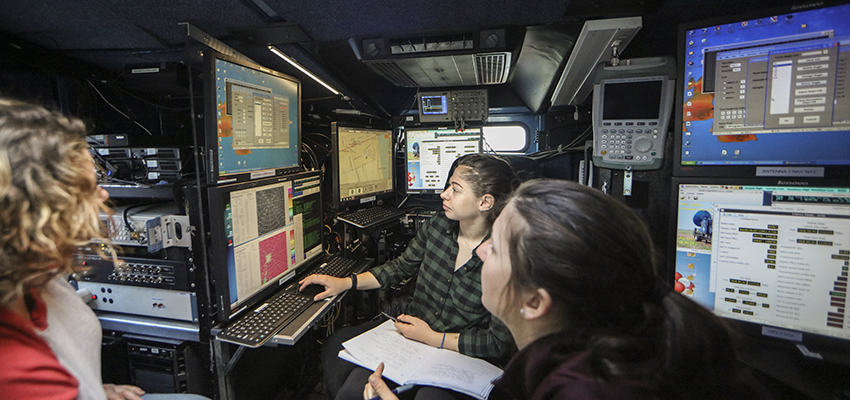
HWS News
6 April 2018 HWS Welcomes Back Doppler-on-Wheels
Professor of Geoscience Neil Laird and Associate Professor of Geoscience Nick Metz have been awarded a National Science Foundation (NSF) grant has enabled the HWS Geoscience Department to welcome the Doppler-on-Wheels (DOW) Mobile Weather Radar back to the region for an extensive education and outreach program.

The DOW mobile radar is a national meteorological observing facility managed and operated by the Center for Severe Weather Research based in Boulder, Colo. The DOW radar has been used to collect measurements of tornadoes, hurricanes, lake-effect snowstorms and other types of severe weather across the United States and also has been featured on the Discovery Channels Storm Chasers reality series.
From Thursday, April 5 to Tuesday, April 17, the DOW mobile radars return gives students and the public a deeper understanding of weather radar systems and atmospheric science. Nearly 70 students in several geoscience classes will have the opportunity to operate the radar and collect data during weather events, as well as conduct several educational outreach events.
A schedule of some of the planned outreach events includes:
- Tuesday, April 10: HWS Geoscience faculty and students will demonstrate DOW radar during a morning visit to Midlakes High School in Clifton Springs, N.Y.
- Thursday, April 12: The DOW radar will be open to the campus and Geneva community for a public outreach event on the HWS campus during the early afternoon.
- Saturday, April 14: DOW radar will join the FLX Maker Fest at the Phelps Community Center and Library from 11 a.m. to 6 p.m.
Laird and Metz obtained three previous NSF grants that brought the DOW mobile radar to campus and the region in 2013, 2014 and 2015. They co-authored and published the article, The Ontario Winter Lake-effect Systems (OWLeS) Field Project, which details an extensive scientific field project that brought together several colleges, universities and research agencies from across the country to collaborate on winter weather research in the Lake Ontario and Finger Lakes regions.
The article outlines how the field project collected unprecedented observations of highly complex lake-effect snow events, including deploying three DOW radars during snowstorms. The team also collaborated with the National Weather Service offices in Binghamton, N.Y. and Buffalo, N.Y. to enhance discussion of project forecasts and planning.
